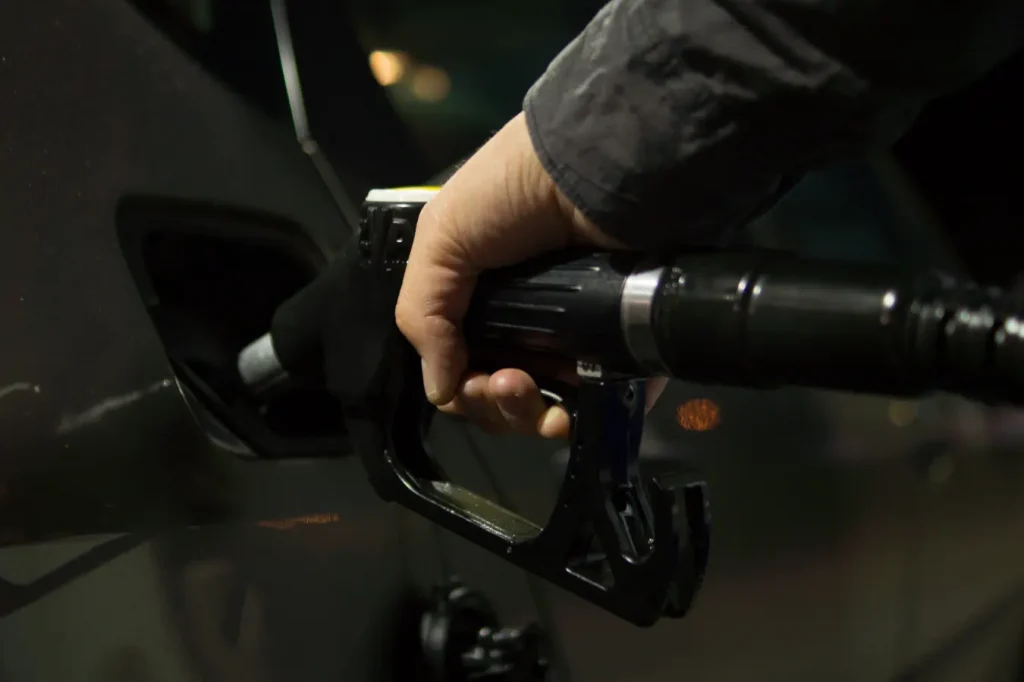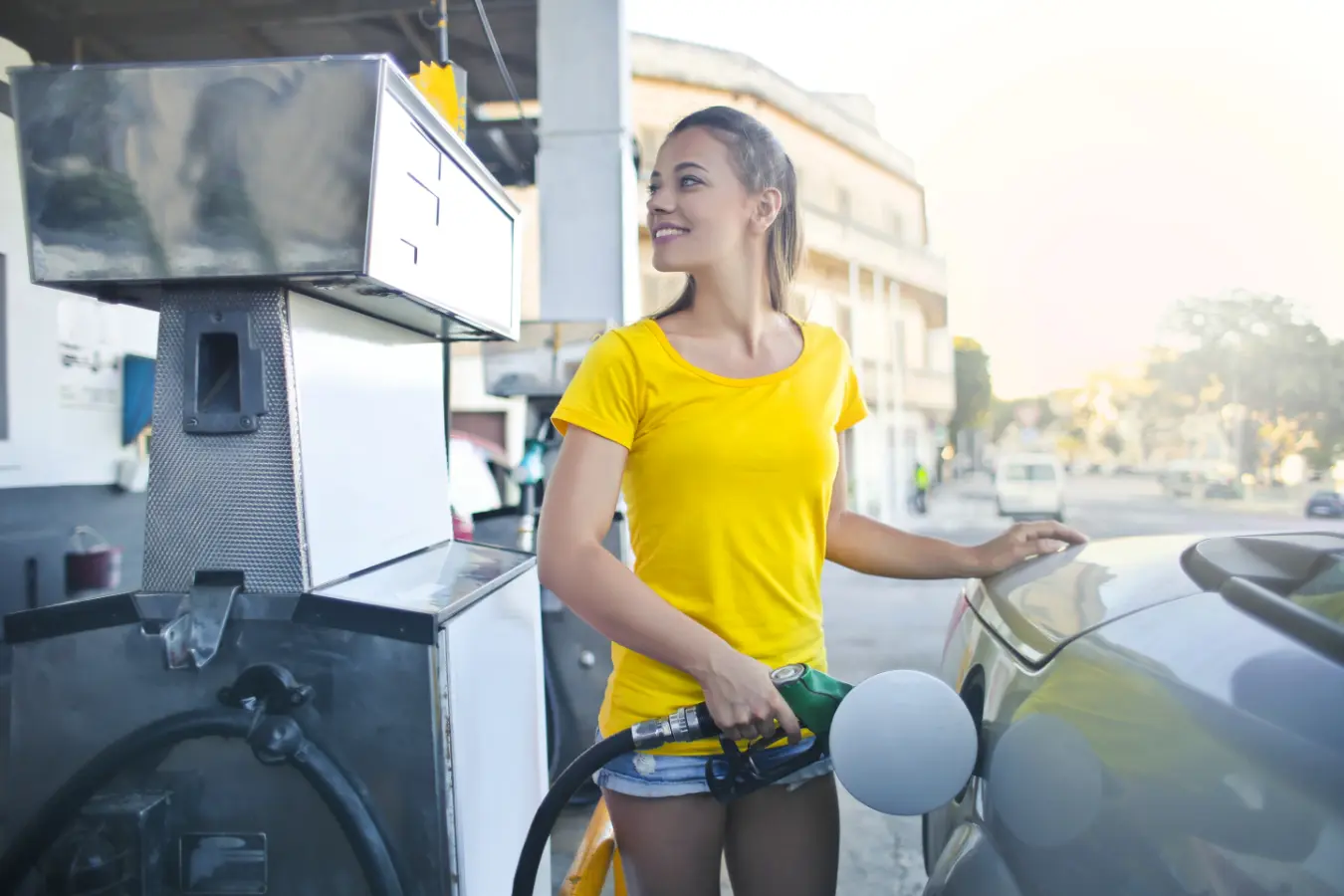The number one rule ensuring your car runs smoothly is using the right fuel. But what if you do it wrong? Around 150,000 people in the UK alone make this mistake every year. Let’s get into the symptoms of the wrong fuel in a car.
Fueling up with the wrong kind of fuel in your car can cause lots of problems, and this article will cover some things that might happen when you put the wrong fuel into your car’s fuel tank. We’ll talk about the potential damage each situation could create as well as ways to minimize that damage and how to prevent it.
What happens if you put the wrong fuel in your car?
One symptom of the wrong fuel in a car is that the engine won’t start. If you’ve put diesel in a petrol car or vice versa, the engine may not start at all. Even if it does start, it probably won’t run for long before it dies again.
Another symptom of the wrong fuel in a car is that the engine will run rough. This means that it will sound different than usual and may shake or vibrate more than normal.
Finally, the wrong fuel in a car can cause fires. If the wrong fuel mixes with the oil in the engine, it can overheat and catch on fire. If you see any of these symptoms, be sure to get your car checked out by a mechanic as soon as possible. Ignoring the problem will only make it worse and could end up costing you a lot of money to fix.
6 Signs and Symptoms of misfueling
● There’s too much smoke coming out of your exhaust.
● When you step on the accelerator pedal, you hear a loud knocking noise.
● Poor/slow acceleration
● You see a warning light on the dashboard.
● The car’s engine stopped working.
● It is hard to restart the engine.
What to do if you accidentally put the wrong fuel in your car?
Be sure not to turn on the ignition and start the car if you have put the wrong fuel in your car. By turning on the ignition you are risking serious damage to your engine and system.
If you’ve ever put the wrong fuel in your car, you know how frustrating and costly it can be. But don’t panic! There are certain steps you can take to minimize the damage and get back on the road as quickly as possible. Here are a few tips to help you out:
1) Don’t turn the engine on. Not even to move your car out of the way. Ask the people around you to help you push the car to a safe place.
2) Call a professional or your insurance company for road assistance.
3) Follow their instructions.
4) Have them drain or suck out the wrong fuel completely.
5) Refuel with the correct fuel.
6) Take the measures we describe below to prevent this from happening again.
What to do if you already started the engine?
Shut the car down as soon as possible. Find a safe place to stop and shut down the engine immediately. The best thing you can do now is hope for the best. You might be lucky that your car only used the fuel that was already in the fuel lines and did not drag in the wrong fuel through its fuel system components. If it did, you are at risk of complete failure of the fuel injectors and sometimes also the fuel pump. In any case, you will need a complete fuel flushing service and engine diagnostics to confirm that there was not any damage done.
Book a Fuel Flushing Service Appointment
If you’ve ever put the wrong fuel in your car, you know how frustrating and stressful it can be. Not only do you have to pay for a recovery truck and a new tank of fuel, but you also have to deal with the hassle of getting your car towed and repaired.
But what if there was a way to avoid all of that? A fuel flushing service can drain and flush your fuel system, getting rid of any contaminants and saving you time, money, and stress. This service can save your fuel pump and fuel injectors both of which costs at least 1000$ to replace. These services are provided by fully accredited specialists who know how to safely work with fuel. And if the damage is particularly severe, they can tow your vehicle to a facility that can better handle the problem. Read more about fuel flushing.
How to prevent misfueling
It’s always important to be careful when putting fuel in your car. Certain car manufacturers even equip their cars with an “Anti Misfueling Device”. This device will not allow a diesel fuel handle/nozzle to fit into petrol cars and vice versa. The diesel fuel nozzle or handle is usually bigger. If you do not have that device, here are some tips for avoiding putting the wrong fuel in a car:
1. Make sure you know what type of fuel your car takes. If it is a new car, ask the seller and consult your owner’s manual to be sure what gas should and should not go into your fuel tank.
2. Check the pump to make sure you’re putting the right fuel in your car. Be present and mindful when pumping gas, do not let your mind wander and make mistakes.
3. Buy a diesel or petrol sticker and glue it near the fuel tank. A simple but noticeable sticker will always remind you which fuel you need to put in. This is super useful when you drive multiple cars with different types of engines.
4. If you’re not sure, ask someone at the petrol station for guidance, especially when you are in a foreign country. Ask them which handle serves which fuel. There is no shame in doing that, trust me. I once visited Albania where the diesel fuel nozzle looked exactly the same as the petrol one.
5. Buy a misfuelling prevention attachment. Third-party companies are now making and selling little plastic devices you can mount on your fuel tank inlet. It works based on the fact that different fuel handles/nozzles have different sizes. With this device, you won’t be able to stick a diesel fuel handle in a petrol car and a petrol fuel handle/nozzle in a diesel car. It’s cheap and it could not be more effective.
How much wrong fuel is considered safe?
In the current day and age, the only right answer is none. Even if you put in just half a gallon or 1-2 liters of diesel in a petrol car or gas in a diesel car it is considered dangerous. The fuel delivery systems of modern cars are extremely sensitive. This means that the smallest amount of wrong fuel can lead to fuel injector problems, fuel pump malfunction and more.
Even if you put a small amount of wrong fuel in a car, we advise you to get that fuel drained or pumped out before igniting the engine. Do not risk your entire engine over a small mistake.

Putting petrol/Gas in a diesel car
The combustion process in your car is what makes it run, but this same process can damage components if not carefully monitored and managed. When you add petrol to diesel fuel the mixture acts like a solvent causing parts such as fuel lines or pumps to wear over time since there’s no longer a protective layer between them and their environment which causes friction from increased contact surfaces being exposed constantly under high temperatures. You are risking a complete failure of the fuel pump, fuel injectors, and severe engine damage. For modern diesel engines, like the OM651 diesel engine from Mercedes-Benz or the M57 diesel engine from BMW, the slightest amount of petrol can lead to severe engine problems.
Putting diesel in a petrol or gas car
Diesel fuel is thick and dense. A lot thicker and denser than petrol. As it is sucked through the fuel delivery system it clogs up everything on its way. The first thing will be the fuel filter and fuel pump. If it gets past those two, it will clog and most likely destroy the fuel injectors and cause havoc in the combustion chamber. You are at risk of complete engine failure.
For anyone who has ever put the wrong fuel in their car, the experience is one they are not likely to forget. The consequences can range from a simple engine stall to serious engine damage, and the cost of repairs can be significant. One way to help reduce the risk of putting the wrong fuel in your car is to use a diesel pump nozzle. The nozzle on a diesel pump is typically larger than the filler neck on a petrol car, which means it is less likely to fit. As a result, it is less likely that someone will accidentally put diesel fuel in a petrol car. While this may not seem like a big deal, it can actually be a lifesaver.
If you put diesel in a petrol car, this happens:
1. Petrol is ignited when a spark from the spark plugs ignites it.
2. Diesel in a petrol engine makes it hard for the spark plugs and fuel system to work.
3. That means the car won’t turn on but even if it does not, you can end up with 1000s of $ in damages to the fuel injection system.
Conclusion
Dealing with a petrol-contaminated diesel engine can be a hassle, but it’s important to act quickly to prevent any permanent damage. If you suspect that your diesel engine has been contaminated with petrol, the first thing you should do is drain out all of the fuel. This will help to prevent any further damage to the engine. Once the fuel has been drained, you should take the engine to a mechanic to have it checked out. They will be able to determine if there is any permanent damage and make any necessary repairs. In most cases, a petrol-contaminated diesel engine can be repaired without any major issues. However, if the damage is severe, you may need to replace the engine entirely. Either way, it’s important to act fast to minimize the damage caused by petrol contamination.

